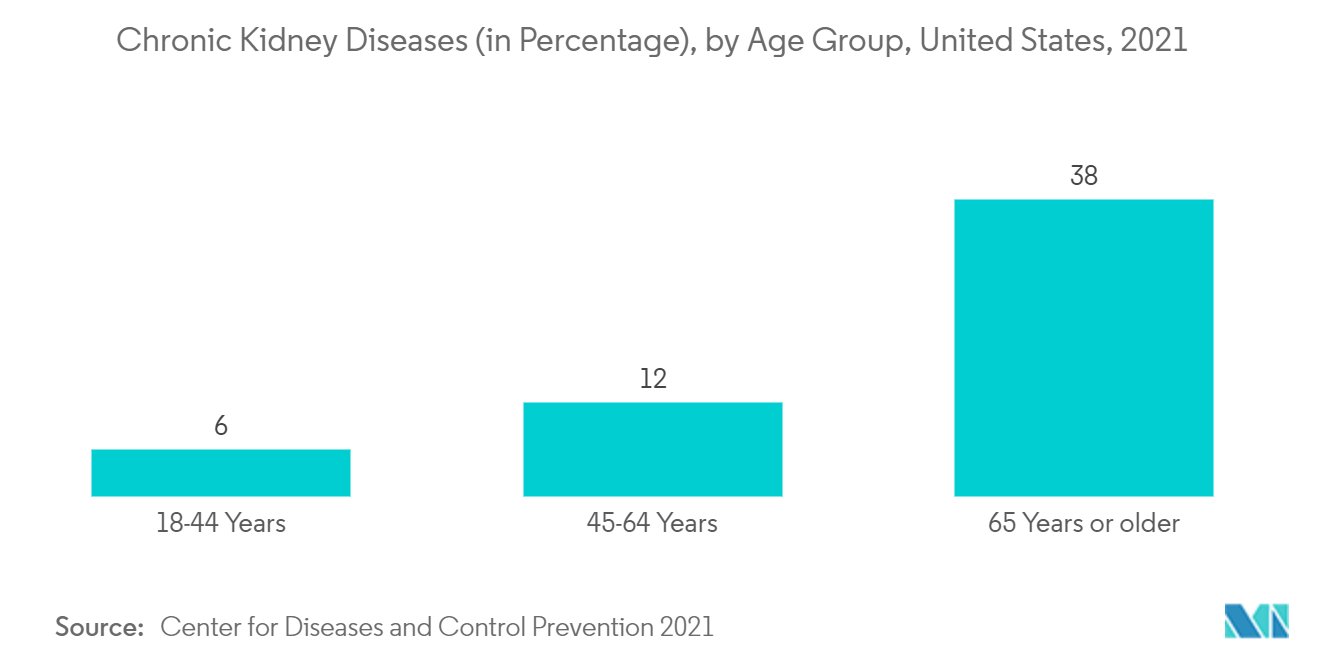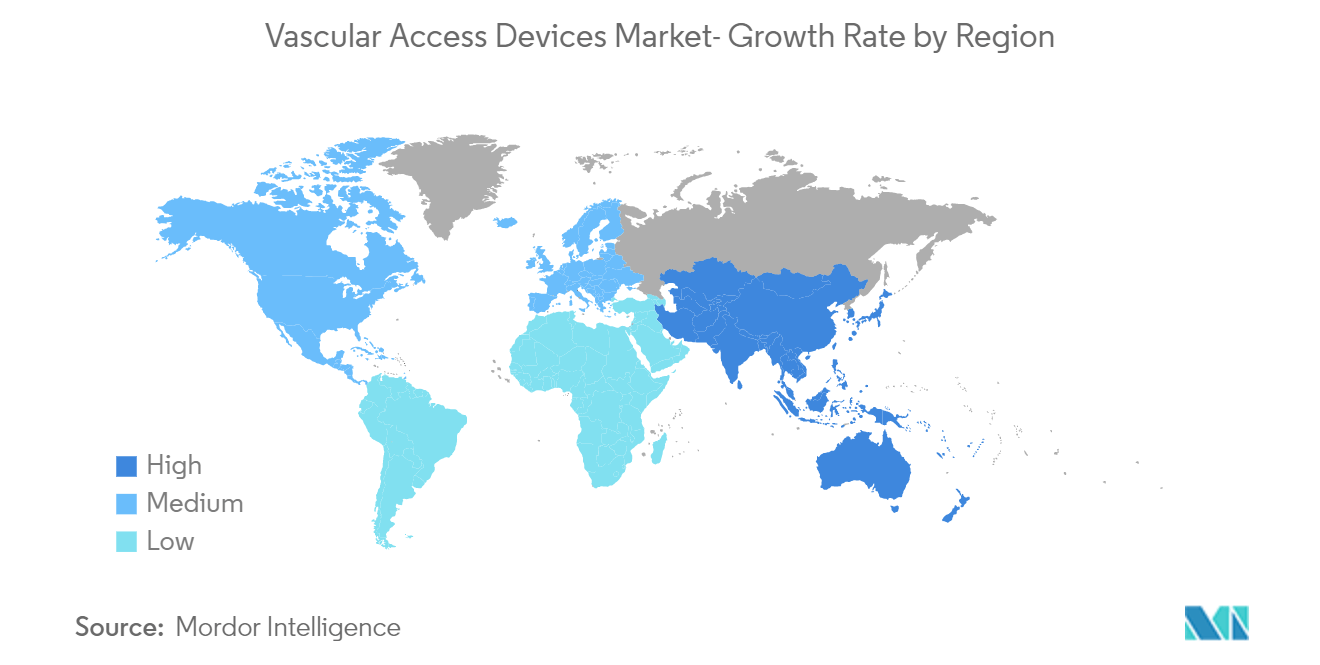Market Trends of Global Vascular Access Devices Industry
This section covers the major market trends shaping the Vascular Access Devices Market according to our research experts:
Administration of Drugs is Expected to Show a Large Share in the Application Segment
The drug administration segment is estimated to account for the largest share of the market as the growth of the drug administration segment is attributed to the high usage of vascular access devices for drug administration for the treatment of infections, cancer, and other diseases. Catheters are used for a variety of functions, including administering drugs, drawing blood, and specialized treatments like hemodialysis. Vascular access catheters can be inserted either peripherally in a patient's arm or centrally, such as in the patient's jugular. According to Cystic Fibrosis Foundation in November 2021, vascular access devices make it possible to repeatedly and continuously get access to the bloodstream for the administration of medications, such as intravenous (IV) antibiotics.
Furthermore, according to the study titled "Central venous access devices for the delivery of systemic anticancer therapy (CAVA): a randomized controlled trial" published in the National Library of Medicine in July 2021, Systemic anticancer treatment (SACT) is administered in a central vein using Hickman-type tunneled catheters (Hickman), peripherally inserted central catheters (PICCs), and completely implanted ports (PORTs). Compared to Hickman and PICCs, PORTs are safer and more effective for patients receiving SACT. Thus, the availability of the various vascular access devices as well as their effectiveness over the other devices supports the segment growth.
As per the European Kidney Alliance, in 2021, 700-800 million people worldwide has chronic kidney disease. It is predicted that by 2040, chronic kidney disease would be the fifth leading cause of mortality worldwide. Because patients with chronic renal disorders need central venous access, the rise in the prevalence of chronic kidney disease has led to the segment's robust growth.
Thus, owing to above-mentioned factors it is expected to drive segment growth over the forecast period.

North America to Dominate the Vascular Access Devices Market Over the Forecast Period
The North America segment is expected to account for the largest share of the market that can primarily be attributed to the high prevalence of cardiovascular diseases in the United States an increase in the number of cancers cases; and an increase in research and clinical trials for vascular access devices. According to the estimates of the American Cancer Society, in 2022, it is expected that 79,000 new instances of kidney cancer are likely to be diagnosed in the United States, including 50,290 cases in males and 28,710 cases in women. The top 10 malignancies for both men and women include kidney cancer. Men have about 1 in 46-lifetime risk of having kidney cancer (2.02% ). For women, the lifetime risk is approximately 1 in 80. (1.03% ). Additionally, in many cases of end-stage renal disease (ESRD), dialysis patients are treated via a catheter, which is performed in an outpatient setting, thus, reducing the hospitalization of ESRD patients by allowing the non-emergency interventional procedures to be carried out.
The factors, such as government guidelines for the regulation of medical devices by the company, better healthcare infrastructure, etc., play a key role in increasing the business and in the launching of new products by multinational companies, thereby, contributing the market growth. For instance, in September 2021, Cardiovascular Systems, Inc. (CSI) announced the commercial launch of the company's ViperCross peripheral support catheter, which recently received Food and Drug Administration 510(k) clearance. Additionally, market participants frequently introduce new products and use a variety of growth tactics in their segments, which is likely to spur market expansion. For instance, in September 2021, Abbott acquired Walk Vascular, LLC, a commercial-stage medical device company with a minimally invasive mechanical aspiration thrombectomy system designed to remove peripheral blood clots. Walk Vascular's peripheral thrombectomy systems will be incorporated into Abbott's existing endovascular product portfolio.
Therefore, the growing demand for technological advancements is expected to drive the market shortly.


